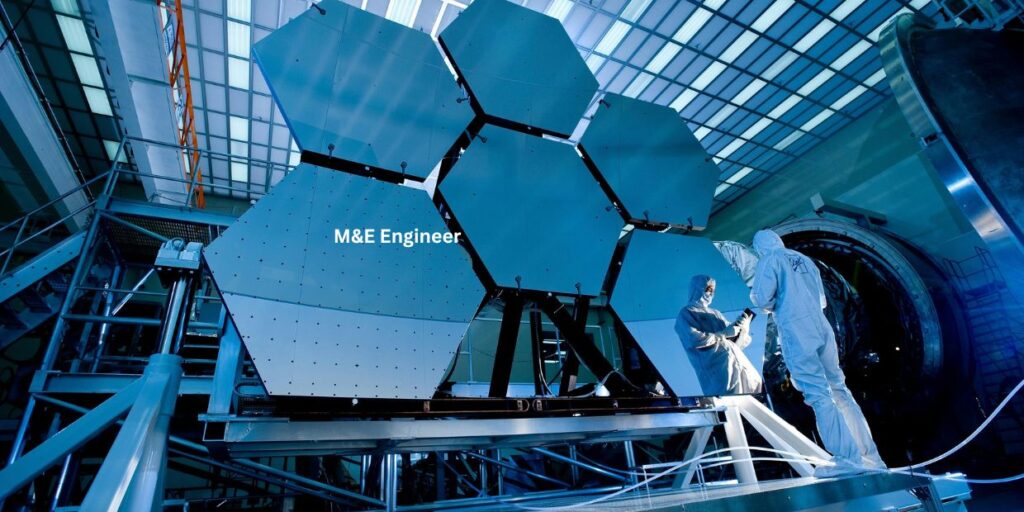M&E Engineer of engineering is vast and varied with numerous specializations that cater to different aspects of the physical and digital realms. One such specialization that plays a crucial role in the construction and maintenance of buildings is the M&E Engineer. Let is dive into what an M&E Engineer does the importance of their role and how they contribute to the modern world.
What is M&E Engineering?
M&E Engineering stands for Mechanical and Electrical Engineering. It is a critical field that combines the principles of both mechanical and electrical disciplines to ensure the smooth operation of a building’s essential systems.

HVAC Systems:
Heating Ventilation and Air Conditioning (HVAC) systems are central to the mechanical aspect of M&E Engineering. They regulate the temperature humidity and air quality in buildings ensuring a comfortable environment for occupants.
HVAC systems are designed to be energy-efficient and adaptable to the varying needs of different buildings from residential homes to large commercial complexes. M&E Engineers must have a deep understanding of thermodynamics fluid mechanics and heat transfer to design and maintain these systems effectively.
Plumbing:
Plumbing is another critical component of the mechanical aspect. It involves the installation and maintenance of systems that transport water and waste. This includes not only the pipes and fixtures visible in bathrooms and kitchens but also the complex network of sewage and drainage systems hidden behind the walls and beneath the floors.
it works to ensure that these systems are leak-proof hygienic and comply with all health and safety regulations providing a vital service that is often taken for granted.
Elevators and Escalators:
Elevators and escalators are essential for the vertical transportation of people and goods within buildings especially in high-rise structures. it is responsible for the design installation and maintenance of these systems.
They must balance efficiency and safety ensuring that these mechanical systems operate smoothly and can handle the demands of peak usage. Innovations in this area such as regenerative drives also contribute to energy conservation and sustainability efforts in modern engineering.
Mechanical Aspect:
The mechanical side of it involves designing analyzing and maintaining systems such as
- Heating Ventilation and Air Conditioning (HVAC)
- Plumbing
- Elevators and Escalators
- Other machinery that has a physical output
Electrical Aspect:
On the electrical front it focuses on
- Power supply and distribution
- Lighting systems
- Telecommunications
- Control systems

The Role of an M&E Engineer:
It is also known as Building Services Engineer and is responsible for the design installation operation and maintenance of the mechanical and electrical systems within a building. Their work ensures that occupants have access to critical services like lighting heating and communication networks.
Design and Analysis:
it uses tools such as Computer-Aided Design (CAD) and Computer-Aided Manufacturing (CAM) to create efficient and reliable systems. They are involved in every stage of a project from planning to installation to testing.
Maintenance and Coordination:
Regular maintenance is vital to prolong the life of mechanical and electrical systems. it coordinate these efforts often acting as the single point of contact for all M&E-related issues within a facility.
Proactive Maintenance:
Proactive maintenance is a cornerstone of M&E Engineering focusing on preventing problems before they occur. This approach involves regular inspections scheduled servicing and timely upgrades of mechanical and electrical systems.
By adopting a proactive stance M&E Engineers can extend the lifespan of building systems minimize downtime and save costs associated with emergency repairs. It’s a strategic process that requires meticulous planning and coordination to ensure all systems function optimally.
Coordination:
Effective coordination is the art of synchronizing various activities and teams to maintain complex building systems. M&E Engineers act as the central hub coordinating between architects contractors and facility managers.
They ensure that maintenance schedules align with the building’s usage patterns and that any disruptions are minimized. This role is crucial in large projects where multiple systems and stakeholders must work in harmony to maintain a seamless operation.
Continuous Improvement:
In the realm of continuous improvement M&E Engineers are always on the lookout for ways to enhance system performance. This involves staying abreast of technological advances and integrating them into existing systems.
Whether it is implementing energy-efficient solutions or adopting new materials and methods M&E Engineers are responsible for ensuring that building systems evolve with the times providing better service and reducing environmental impact.
Why M&E Engineering Matters:
In our modern world the functionality of buildings heavily relies on the seamless integration of mechanical and electrical systems. M&E Engineers play a pivotal role in:
- Ensuring the safety and comfort of building occupants
- Reducing energy consumption through efficient design
- Maintaining the longevity of a building’s infrastructure
Conclusion:
M&E Engineers are the unsung heroes who work behind the scenes to make our daily lives run smoothly. Without their expertise the buildings we live and work in would be far less comfortable safe and functional. As we continue to advance technologically the role of the M&E Engineer will only grow in importance making it a field worth watching and appreciating.
Also Read This : zxtech
